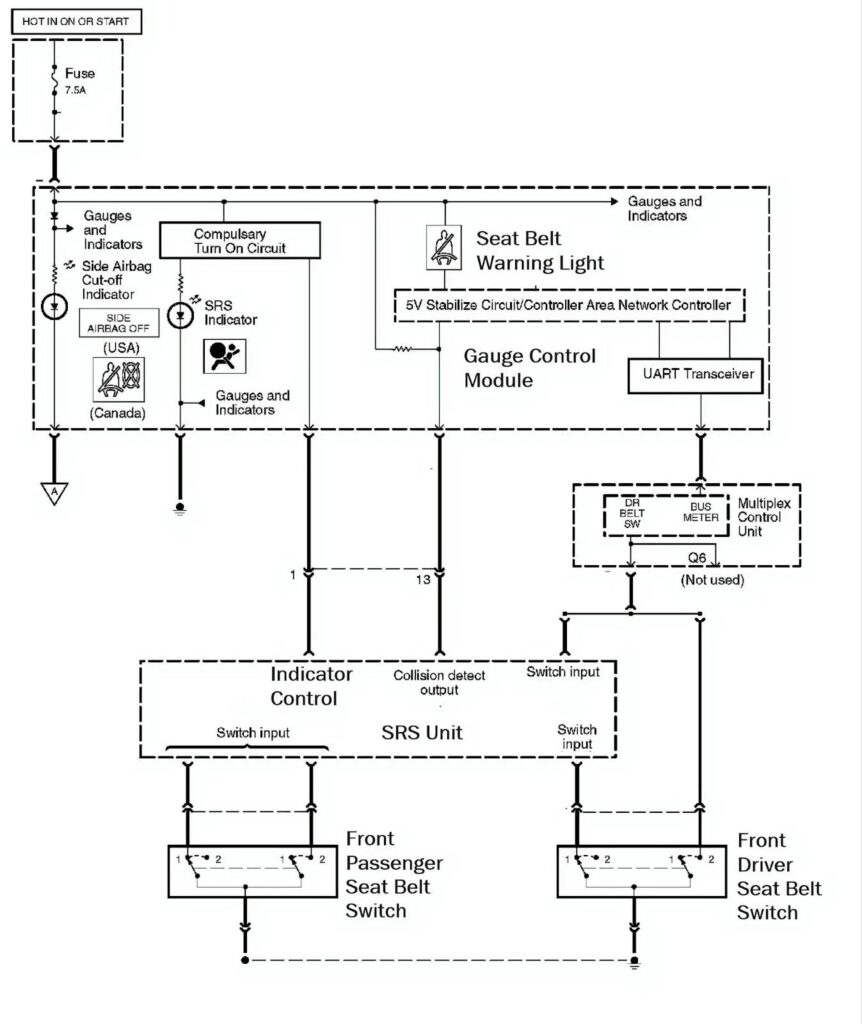Q: Where is the Seat Belt Sensor Typically Located?
A: The only way the seat belt can know if it’s buckled is with a switch that is built into the latching part of the buckle. The switch on older vehicles (pre-airbag) triggered the seat belt warning light directly. On newer vehicles, the switch signal is read by the SRS, GEM, or a “smart junction box,” which is a fuse panel that has a computer built in.
The switch on older vehicles (pre-airbag) triggered the seat belt warning light directly.
– Richard McCuistian, ASE Certified Master Automobile Technician

The seat belt sensor is part of a vehicle’s passenger safety system. It detects when the seat belts in the vehicle are fastened while a passenger is sitting on a seat. If the seat belt isn’t fastened over a rider, then the seat belt sensor will trigger the seat belt warning light while playing a pinging sound.
If the occupant restraint sensor in the seat indicates there’s weight in the seat but the seat belt isn’t buckled, the passenger airbag may be disabled along with a warning light that the passenger side airbag is turned OFF.


Tips on How to Access the Seat Belt Sensor
The following steps usually allow access to the seat belt sensor:
- Fold the seat forward.
- Disconnect the wires.
- Unbolt the seat belt buckle. You should now be able to see and access the seat belt sensor.
Refer to your vehicle’s manual or talk to a mechanic if you can’t locate the sensor yourself.
Any information provided on this Website is for informational purposes only and is not intended to replace consultation with a professional mechanic. The accuracy and timeliness of the information may change from the time of publication.





























